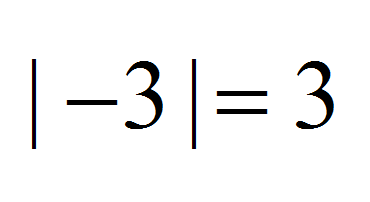In the long run, we would expect students to be able to correctly guess the answers to half the questions
Problem 1. (20 points) In the long run, we would expect students to be able to correctly guess the answers to half the questions on a true/false test if they are guessing at random. Some tests, however, contain unintended clues to the correct answer so that "testwise" students can obtain higher scores than would be expected through random guessing. Fourteen students were randomly selected to take a true/false test composed of 20 nonsense questions that had been purposely constructed to have clues to the correct answer. Their test scores are displayed in the table below. Did students exhibit testwiseness in taking this test (i.e., was the mean score higher than would be expected if the students had randomly guessed the answers)? Test at α=.05.
2. Construct and interpret the 95% confidence interval for the mean.
| 12 | 10 | 9 | 13 | 13 | |||
| 8 | 11 | 7 | 14 | 11 | |||
| 15 | 17 | 11 | 12 | ||||
Problem 2 (20 points)
A survey is conducted on attitudes toward smoking. A random sample of eight married couples is selected, and the husbands and wives respond to an attitude-toward-smoking scale. The husbands’ and wives’ scores for each couple are as follows (higher scores indicate more positive attitudes).
| Husbands | Wives |
| 16 | 15 |
| 20 | 18 |
| 10 | 13 |
| 15 | 10 |
| 8 | 12 |
| 19 | 16 |
| 14 | 11 |
| 15 | 12 |
- 1. Draw a scatterplot with wives’ scores on the horiziontal axis and husbands’ scores on the vertical. Discuss the scatterplot.
- 2. Compute the correlation between husbands and wives attitude scores
- 3. Conduct the appropriate statistical analysis to test whether the attitudes toward smoking differ between men and women. Test at alpha=.05
Problem 3 (10 points)
In the study in Problem 2, suppose the researcher had not sampled married couples, but had independently sampled 8 women from the population of married women and 8 men from the population of married men and hem fill out the survey. How would this change your analysis of the question whether attitudes differ between men and women? Carry out the statistical analysis using the data from above, but assuming this different research design.
Problem 4 (20 points)
Will a smiling person accused of a crime be treated more leniently than one who is not smiling? If so, does the type of smile make a difference? Subjects in an experiment were asked to assume the role of a student member of a college disciplinary panel and judge a student accused of cheating. Each subject received a file that contained, in addition to information about the accused student ("suspect") and the alleged cheating incident, a color picture of the suspect portraying one of four facial expressions (described below). Subjects answered several questions about the likelihood of the suspect's guilt and how severe the punishment should be. These questions were combined into one "leniency score." Four groups of subjects were tested. Each group was randomly assigned to see one of the three types of smiles: a "felt" or genuine smile; a "fake" smile; a "miserable" smile or a neutral-expression control. Twenty randomly selected college students were randomly assigned to the four conditions with the constraint that there be an equal number of subjects (5) in each group. The three types of smile have been studied and categorized in previous research. Following are the data from this experiment.
Smile Type Leniency Score
felt smile 3.50
felt smile 4.00
felt smile 5.00
felt smile 4.50
felt smile 4.50
fake smile 5.50
fake smile 7.00
fake smile 7.00
fake smile 6.50
fake smile 7.50
miserable 3.50
miserable 4.00
miserable 5.00
miserable 4.00
miserable 5.00
neutral 2.50
neutral 3.50
neutral 2.00
neutral 4.00
neutral 3.50
Conduct the appropriate statistical test to answer the researcher’s questions. Use α=.05. Display the means and standard deviations. Display the results of the statistical test in the appropriate summary table. Conduct an appropriate follow-up test and compute the omega squared. Interpret your results.
Problem 5 (20 points)
A researcher was investigating how the type of feedback students receive affects their mastery of complex learning tasks. Forty students were selected to participate in the study and were randomly assigned to one of four groups (10 students per group). The groups were formed on the basis of the type of feedback they received as they learned the task: all positive, all negative, a mixture of positive and negative, or no feedback. After completion of the task, students were categorized as having been successful or unsuccessful in learning the task. Following are the numbers of students in each category. Is type of feedback related to learning outcome? Use α=.05
| Successful | Unsuccessful | ||
| Positive feedback | 6 | 4 | |
| Negative feedback | 4 | 6 | |
| Mixed feedback | 8 | 2 | |
| No feedback | 3 | 7 | |
Problem 6. (10 points)
Consider the research presented in Problem 5 above. Discuss the implications of a Type I and Type II error for this problem. Which is the more serious problem—support your answer. What can be done to minimize the probability of a Type I error? What can be done to minimize the probability of a Type II error?
Deliverable: Word Document


![[All Steps] Grade point average The average undergraduate grade [All Steps] Grade point average The average](/images/solutions/MC-solution-library-80762.jpg)


![[See Solution] The Bureau of Labor Statistics collects information [See Solution] The Bureau of Labor Statistics](/images/solutions/MC-solution-library-80765.jpg)

